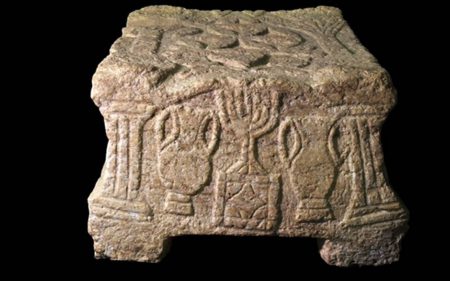If you ever go on a tour of Israel with me or the Center for Holy Lands Studies, you will go to Magdala, the home of Mary Magdalene. There, in a synagogue that Jesus likely visited, you will see the Magdala Stone, which Jesus likely saw and perhaps even preached from.
Lawrence Schiffman tells a little more about the stone in this article from Ami magazine. The article’s key insight is what this stone says about Jewish views of synagogue in the time of Jesus:
There appear to be flat, indented areas on [the stone’s] four top corners that could have supported poles. It has been suggested that this object was the base for what was then called a teyvah (a “chest”), the ancient synagogue furnishing that served both to hold the Torah scroll [like a modern-day ark] and as a lectern upon which it could be read. This beautiful object would have been part of a synagogue furnished and decorated more extensively than any other from the 1st century CE that has been excavated in Israel.
But this stone has an enormous significance, way beyond its beauty and rarity. It is the earliest post-biblical evidence we have for the notion that a synagogue is a mikdash m’at, a “small sanctuary,” a [talmudic description] drawn from Ezekiel (11:13), where it refers to God. Specifically, the decision to decorate the base of the teyvah on which the Torah was read with symbols of the Temple [implies] that the synagogue was intended to function as a local, admittedly less sanctified, version of the Temple. This object was decorated richly with such symbols to show that the prayer, Torah reading, and study that occurred in this building were likened to the sacrifices offered in the Temple. What this means is that the concept of the synagogue as a replacement for the Temple did not come into existence as a reaction to the latter’s destruction; rather, for [those] Jews who lived too far away to visit Jerusalem regularly, it existed long before.
Read the whole thing!

